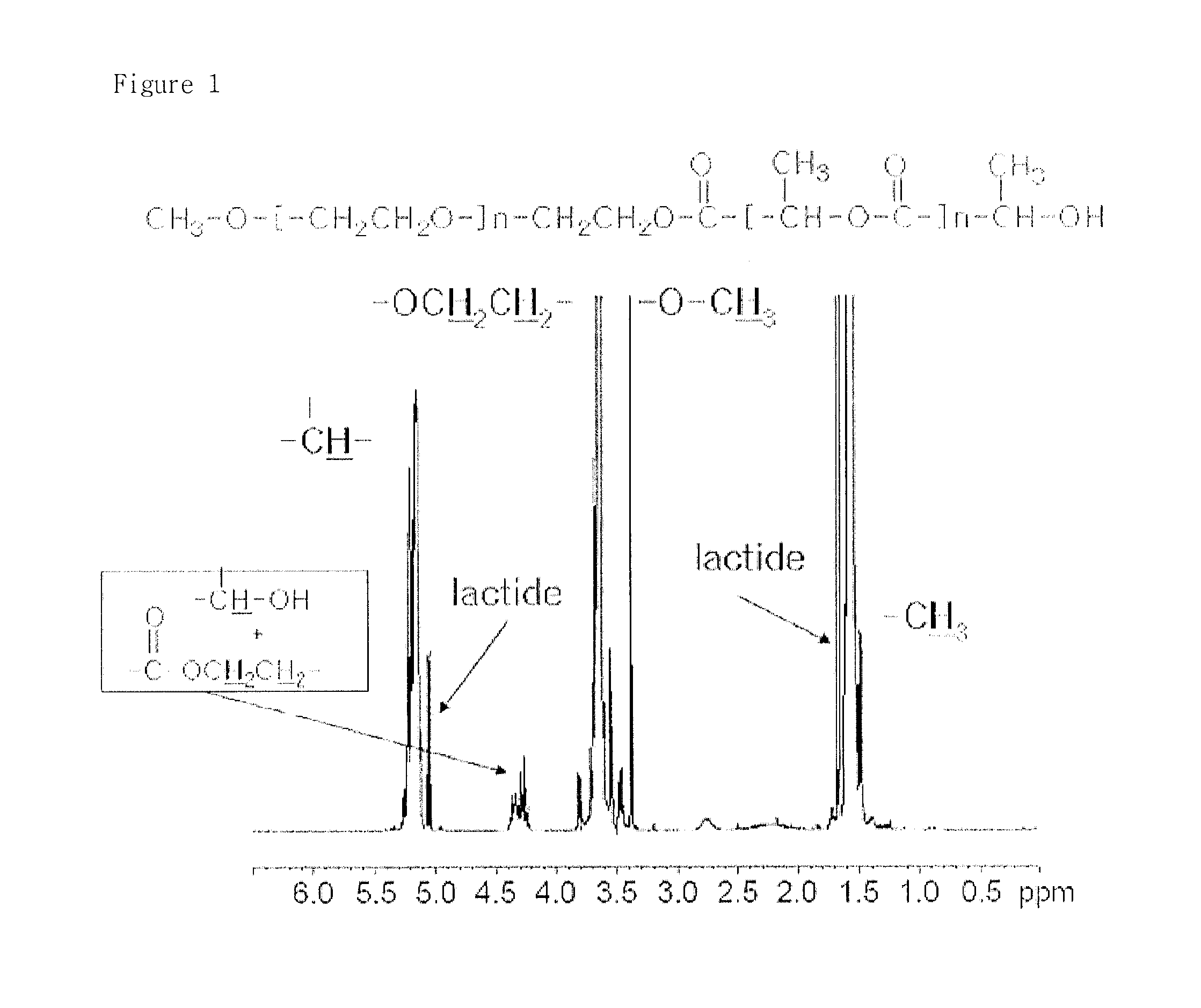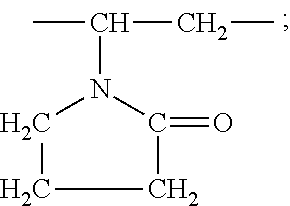Highly pure amphiphilic copolymer comprising hydrophobic block from alpha-hydroxy acid and process for the preparation thereof
a technology of hydrophobic block and copolymer, which is applied in the field of high-pure amphiphilic block copolymer, can solve the problems of large molecular weight distribution, failure of continued drug release, and excessive drug release, so as to achieve high-purity polymer, reduce toxicity and side reactions, and effectively remove unreacted monomers
- Summary
- Abstract
- Description
- Claims
- Application Information
AI Technical Summary
Benefits of technology
Problems solved by technology
Method used
Image
Examples
preparation example 1
Synthesis of mPEG-PLA Diblock Copolymer Including Monomethoxypolyethylene Glycol and d,l-Lactide
[0067]First, 100 g of monomethoxypolyethylene glycol (mPEG: number average molecular weight 2,000) was introduced into a 250 mL round-bottom flask equipped with an agitator, and was dehydrated while being agitated at 120° C. for 2 hours under vacuum. Next, 0.1 g of stannous octoate (Sn(Oct)2) dissolved in 200 μl of toluene was further added to the reaction flask, and toluene was removed via distillation while agitating the reaction mixture for 1 hour under vacuum.
[0068]Then, 100 g of d,l-lactide was added thereto and dissolved therein with stirring under nitrogen atmosphere. After the completion of the dissolution of d,l-lactide, the reactor was sealed to carry out a reaction at 120° C. for 20 hours. After the completion of the reaction, 193 g of a crude diblock copolymer mPEG-PLA (number average molecular weight: 3,725 Daltons) was obtained. Finally, the product was analyzed by H-NMR, an...
example 1
Purification of mPEG-PLA Diblock Copolymer
[0071]First, 50 g of the mPEG-PLA obtained from Preparation Example 1 was added to 100 mL of acetonitrile and dissolved therein. To the mPEG-PLA dissolved in acetonitrile, 100 mL of an aqueous sodium bicarbonate solution (0.1 g / mL) was added gradually, and the resultant mixture was agitated at 60° C. for 2 hours. Next, 10 g of sodium chloride was added thereto, and agitated and dissolved at room temperature, thereby causing phase separation between the two kinds of solvents at room temperature. The resultant two solvent layers were separated from each other by using a separatory funnel, and the organic solvent layer was collected. To the organic solvent layer, 100 mL of distilled water and 10 g of sodium chloride were added and dissolved with stirring. The resultant two solvent layers were separated again by using a separatory funnel and the organic solvent layer was collected. The organic solvent layer was subjected to fractional distillati...
example 2
Purification of mPEG-PLA Diblock Copolymer
[0072]Example 1 was repeated except that 50 mL of an aqueous sodium bicarbonate solution (0.1 g / mL) was added gradually to mPEG-PLA to obtain 47 g of a purified mPEG-PLA. Then, the lactide content and Sn (catalyst) content were measured. The results are shown in the following Table 1.
PUM
| Property | Measurement | Unit |
|---|---|---|
| molecular weight | aaaaa | aaaaa |
| molecular weight | aaaaa | aaaaa |
| molecular weight | aaaaa | aaaaa |
Abstract
Description
Claims
Application Information
 Login to View More
Login to View More - R&D
- Intellectual Property
- Life Sciences
- Materials
- Tech Scout
- Unparalleled Data Quality
- Higher Quality Content
- 60% Fewer Hallucinations
Browse by: Latest US Patents, China's latest patents, Technical Efficacy Thesaurus, Application Domain, Technology Topic, Popular Technical Reports.
© 2025 PatSnap. All rights reserved.Legal|Privacy policy|Modern Slavery Act Transparency Statement|Sitemap|About US| Contact US: help@patsnap.com



